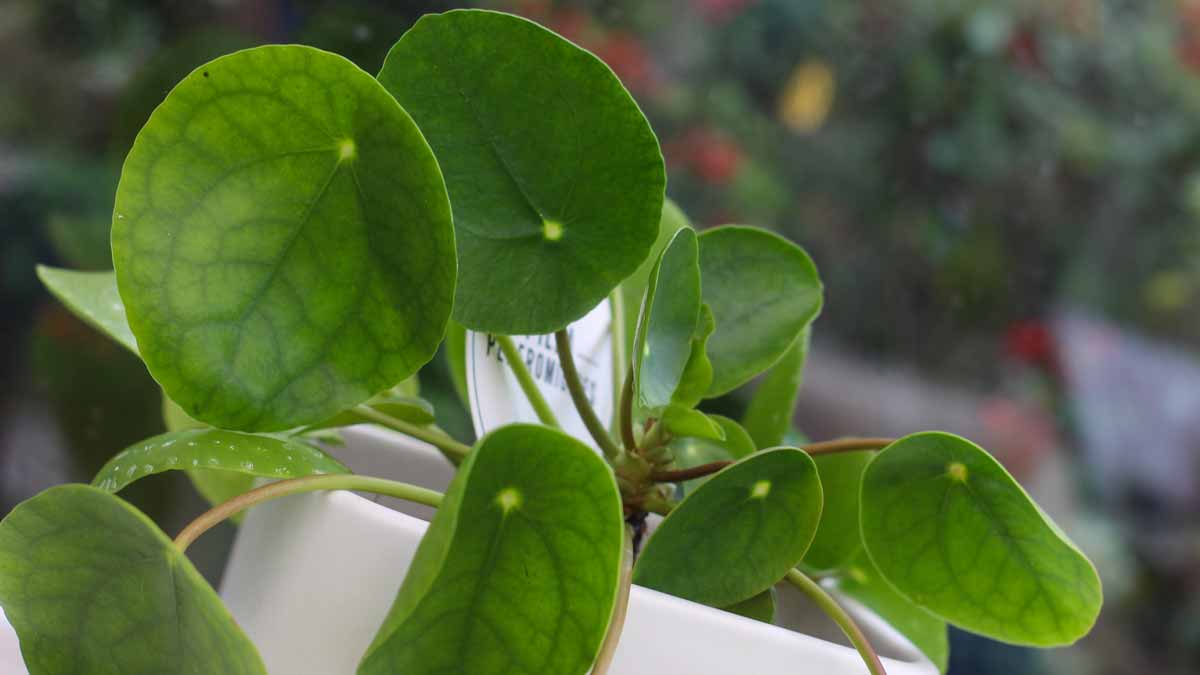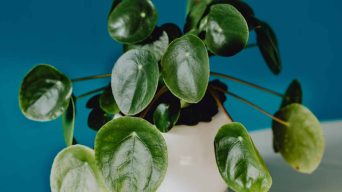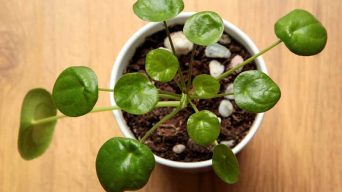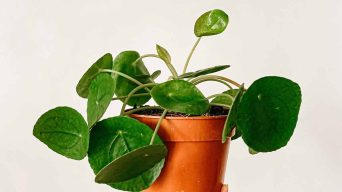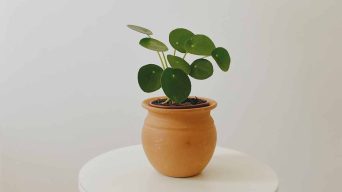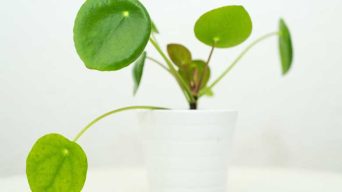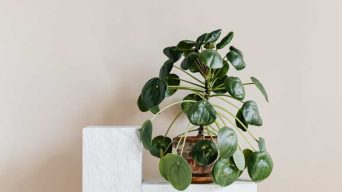The Pilea peperomioides, commonly known as the Chinese Money plant and the UFO plant, is known for its lush, green foliage and easy care requirements.
But even the most low-maintenance plants can experience problems from time to time.
One common issue that affects Pilea is curling leaves.
But what do you do when your Pilea leaves start to curl? Why are my Pilea leaves curling, and how can I fix it?
Here we’ll discuss the 11 most common reasons for Pilea leaves curling, as well as provide solutions for each problem.
Why Are My Pilea Leaves Curling and How Can You Fix It?
Pilea leaves curling can be caused by several different factors, both environmental and pest-related.
Here are 11 of the most common reasons for Pilea leaves curling, as well as solutions to each problem.
Underwatering
Pilea plants are fairly drought tolerant but will show signs of distress when they are not getting enough water.
One of the first signs of an underwatered Pilea is curling leaves.
When Pilea plants don’t receive enough water, their leaves begin to curl to prevent them from losing moisture.
The leaves will become dry and brittle and may also drop their lower leaves and produce smaller, fewer flowers.
How To Fix It
The best way to fix underwatering is to give your indoor plant more water.
It would be best if you watered Pilea plants about once a week or when the soil is dry.
You may need to water your Pilea more frequently during the summer when it is actively growing.
Check the soil before watering to ensure it is dry at least an inch below the surface.
Water slowly and deeply until the excess water begins to run out of the bottom of the pot.
Overwatering
While Pilea plants need to be watered regularly, they can suffer from too much water just as easily as too little.
Overwatering is one of the most common problems with houseplants and can cause several issues, including curling leaves.
When Pilea plants are overwatered, their leaves curl and drop off. The edges of the leaves may turn brown or black as well.
The stems may also become soft and mushy.
In severe cases, the roots may rot, and the plant will die.
How To Fix It
If you think you are overwatering your Pilea, the best thing is to let the soil dry out completely before watering again.
Check the soil before watering to ensure it is dry at least an inch below the surface.
If the soil is still wet, wait another day or two before watering again.
You may need to adjust your watering schedule or the type of pot you are using if you find that your Pilea is constantly overwatered.
If the roots have already begun to rot, you may need to repot your plant in fresh soil.
Ensure the new pot has drainage holes to prevent the roots from sitting in water.
Low Humidity
Pilea plants are native to tropical and subtropical regions and prefer high humidity.
While they will tolerate lower humidity levels, they may experience some leaf curling if the air is too dry.
Pilea leaves will begin to curl and drop off when the air is too dry. The edges of the leaves may also turn brown or black.
The plant may also produce fewer flowers and leaves.
How To Fix It
To fix low humidity, you will need to increase the humidity level around your plant.
One way to do this is to place your plant on a pebble tray.
Fill a tray with gravel or stones and add water to submerge the rocks.
Place your plant on the tray and make sure the pot is not sitting in the water.
The evaporation from the water will increase the humidity around your plant.
You can also use a humidifier to increase the humidity in the room where your plant is located.
Too Much Sunlight
Pilea plants do best in bright indirect light but can tolerate some direct sunlight.
However, too much direct sunlight can harm the plant and cause the leaves to curl.
Curling is also a way for the Pilea to reduce its surface area, which helps to prevent the leaves from drying out.
Pilea plants exposed to too much direct sunlight will have curled, dry, and brown leaves on the edges.
The Chinese Money Plant leaves may also drop off.
How To Fix It
If your Pilea is getting too much direct sunlight, the best thing to do is to move it to a location with more indirect light.
You may need to experiment with different locations until you find one that suits your plant.
Pilea plants do best when grown indoors near a south- or west-facing window. This will give them the bright indirect light they need without exposing them to the harsh midday sun.
Heat Stress
Pilea plants are native to tropical and sub-tropical regions and prefer warm temperatures.
However, they can suffer from heat stress if the temperature gets too high.
When Pilea leaves are exposed to excessive heat, they often start curling. This is most often seen in the tips of the leaves, but the entire Pilea leaf can be affected.
The reason for this curling is that the heat damages the cells on the outermost layer of the leaf.
As a result, the Pilea peperomioides leaf loses its ability to hold its shape and starts to curl.
How To Fix It
To prevent heat stress, keep your Pilea plant in an area that does not get too hot.
Avoid placing it near vents, heaters, or any other heat source, and ensure it is not in direct sunlight.
If the temperature gets too high, you can mist the leaves with water to help cool them down.
Cold Temperatures
Pilea plants are not tolerant of cold temperatures and can be damaged by frost.
When exposed to cold temperatures, the Chinese Money Plant leaves will often start to curl. This is done to protect the plant from cold weather.
The curled leaves will help trap heat and moisture, preventing the plant from drying out or freezing.
How To Fix It
If your Pilea plant is exposed to cold temperatures, the best thing to do is to bring it inside.
Place it in a warm, sunny spot and ensure it is not near any drafts.
Consider using a grow light to give it the extra light it needs to stay healthy.
Nutrient Deficiency
Pilea plants need a steady supply of nutrients to stay healthy and grow properly.
A lack of essential nutrients can cause several problems, including curling leaves.
One of the most common nutrient deficiencies in Pilea plants is nitrogen deficiency.
Nitrogen is essential for the growth of leaves and helps keep them green.
If your Pilea is not getting enough nitrogen, the leaves will turn yellow and curl.
Nutrient deficiencies can also cause curling leaves, but nitrogen deficiency is the most common.
How To Fix It
If you think your Pilea is not getting enough nutrients, the best thing to do is to fertilize it.
Choose a fertilizer that is high in nitrogen and follow the instructions on the package.
Be sure to fertilize your plant every two weeks during the growing season.
Add some organic matter to the potting mix, such as compost or manure. This will help improve the soil quality and give your plant the necessary nutrients.
Pest Infestation
Pests can be a big problem for Pilea plants, and infestations can often lead to curling leaves.
Aphids are one of the most common pests that attack Pilea plants.
These tiny insects feed on the plant sap, which can cause the leaves to curl.
Other pests that may attack Pilea plants include mealybugs, spider mites, and whiteflies.
Pest infestations frequently lead to the yellowing of Pilea leaves and can also induce curling.
How To Fix It
If you think your Pilea plant has a pest infestation, you can remove the pests by hand. You can do this by wiping the leaves with a damp cloth or using a cotton swab dipped in alcohol.
If the infestation is severe, use neem oil or insecticidal soap to eliminate the pests.
Neem oil is a natural insecticide that is safe for use on plants.
Insecticidal soap is safe for plants and kills the most common household pests.
Compacted Soil
Pilea plants prefer loose, well-draining potting soil.
If the soil is too compacted, it can lead to several problems, including curling leaves.
When the soil is too dense, it doesn’t allow the roots to breathe correctly.
This can cause the leaves to turn yellow and curl.
Compacted soil can also cause the plant to become stunted and prevent it from growing properly.
How To Fix It
You must loosen the soil around your Pilea plant to fix the problem.
Add some organic matter to the soil, such as compost or manure, and use a garden fork or tiller to loosen the soil.
Be sure to loosen the soil around the entire plant, not just the roots.
If the soil is too compacted, you may need to replant your Pilea in a new pot with fresh, loose soil.
Chemical Damage
Pilea leaves curl when they are damaged by chemicals.
The leaflets become thickened and distorted, and the margins may roll inward or outward.
The damage is usually most severe on new growth but can also affect older leaves.
Pilea leaves are susceptible to herbicides, insecticides, and too much fertilizer.
Even household products like bleach and detergents can cause Pilea leaves to curl.
How To Fix It
If your Chinese Money plant leaves are curling because of chemical damage, removing the chemicals’ source is the best thing to do.
If you think your plant has been sprayed with herbicide or insecticide, wash the leaves with water.
Be sure to wear gloves and protective clothing when handling chemicals.
If your Pilea is growing in soil treated with chemicals, you must flush the soil with water.
To do this, water the plant thoroughly and allow the water to run out of the drainage holes.
Repeat this process several times to remove all traces of the chemicals.
If you think your Pilea has been damaged by too much fertilizer, leach the soil with water.
Refrain from fertilizing your plant for at least six weeks, and use a balanced fertilizer.
Transplant Shock
Transplant shock is a common problem that can cause Pilea leaves to curl, wilt, and turn brown. This usually happens when the plant is moved to a new pot or location.
When a plant is transplanted, its roots are disturbed, which can cause it to go into shock. The plant cannot get the water and nutrients needed to thrive.
Transplant shock can also be caused by planting the Pilea too deeply in the pot.
How To Fix It
If your Pilea is suffering from transplant shock, the best thing to do is to leave it alone.
Refrain from fertilizing or watering your plant for at least a week after transplanting.
Once the plant can adjust to its new environment, it will recover.
If your Pilea is not improving after a week, you can water it lightly.
Be sure to use room-temperature water and only water the soil, not the leaves.
How To Prevent Pilea Leaves From Curling
The best way to prevent Pilea leaves from curling is to provide your plant with the proper care.
Pileas are relatively easy to care for but have specific needs.
Here are some tips to help you keep your Pilea healthy and free from curling leaves:
- Provide your plant with bright, indirect sunlight. Pileas prefer bright light but can not tolerate direct sun.
- Water your plant when the top inch of soil is dry. Be sure to use room-temperature water and allow the water to drain out of the pot.
- Keep your Pilea in a room with consistently warm temperatures. Pileas prefer temperatures between 65 and 75 degrees Fahrenheit.
- Place your plant in a pot with well-draining soil. Pileas are sensitive to overwatering and will not tolerate soggy soil.
- Keep your plant in a humid environment. Pileas like humidity, so you may need to mist your plant regularly.
- Feed your plant with a balanced fertilizer every month during the growing season.
- Repot your Pilea every two years or when the roots crowd the pot.
- Be careful not to damage the roots when transplanting.
- Keep an eye out for pests and diseases. Pileas are susceptible to mealybugs, aphids, and spider mites.
Following these tips can help prevent curled leaves and keep your plant healthy.
Final Thoughts
Pilea peperomioides plant is a popular houseplant known for its interesting leaves.
The leaves are often variegated or have unique shapes, making them stand out indoors.
While Pileas are generally easy to care for, they can sometimes experience problems, such as curling leaves.
Curling leaves can be caused by various factors, including too little water, too much sunlight, or pests.
Fortunately, a few simple solutions can help cure your plant.
Following the tips in this article can help prevent curling leaves and keep your Pilea healthy.

